Greetings, fellow El Pasoans! Join me once again as we delve into the heart of local education, unearthing the changes and conversations brewing within the EPISD (El Paso Independent School District). As your dedicated guide from “To Do El Paso,” I'm here to bring you the inside scoop on the latest developments in our vibrant city. Today, we're embarking on a comprehensive journey through the recent EPISD community meetings at Western Hills Elementary, where crucial insights into the education landscape were shared.
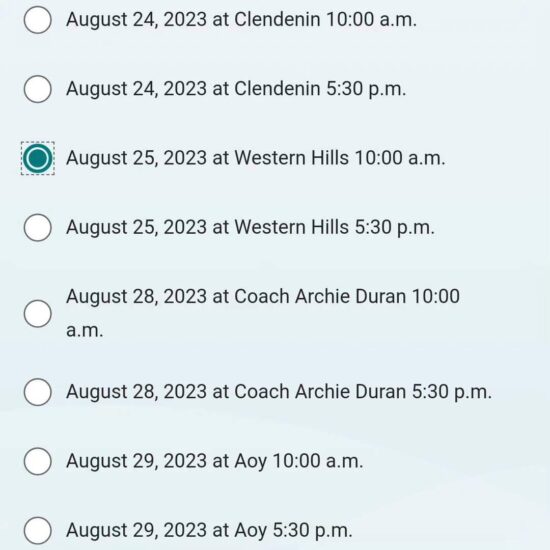
Picture this: Last week, I found myself at the epicenter of educational transformation. I was attending the EPISD community meetings held at Western Hills Elementary, ready to gain firsthand knowledge about the changes that might shape my children's learning journey. Little did I know that this experience would offer a deep dive into the intricacies of bilingual education, ESL programs, and the evolving 90/10 model. But before we delve into these details, let's rewind a bit.
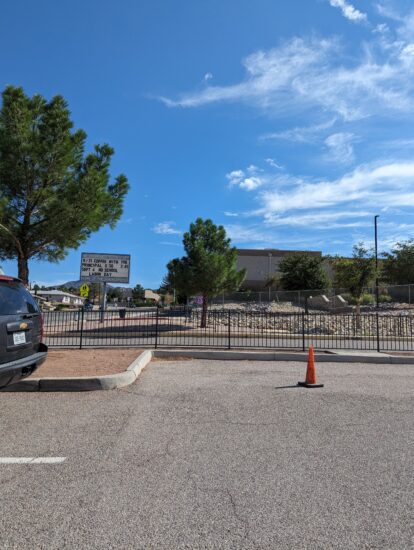
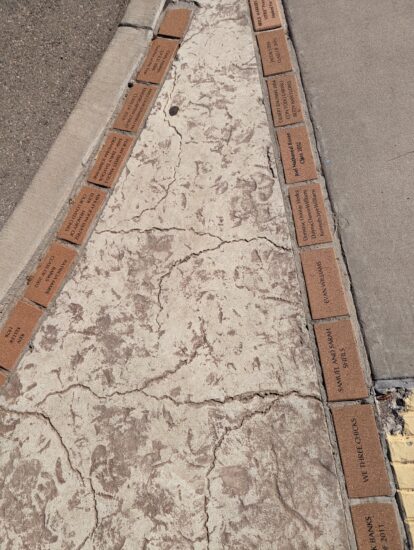
Navigating the Maze: My Journey to the EPISD Community Meetings
The adventure began with a minor detour – I inadvertently ended up at the wrong school, Western Hills Academy, before realizing that the correct venue was just a tad farther up the hill. A heads-up for those planning to attend these meetings: Keep your sights set on the right location for a seamless start to your journey!
Once settled into the meeting, I found myself immersed in a world of information and enlightenment. The organizers spared no effort in presenting the unvarnished truth, united by the shared mission to elevate the quality of our children's education. Amidst my initial confusion about the impending changes, I embraced these meetings with an open mind. After all, this academic year had already witnessed a whirlwind of alterations, leaving both parents and educators grappling to adapt.
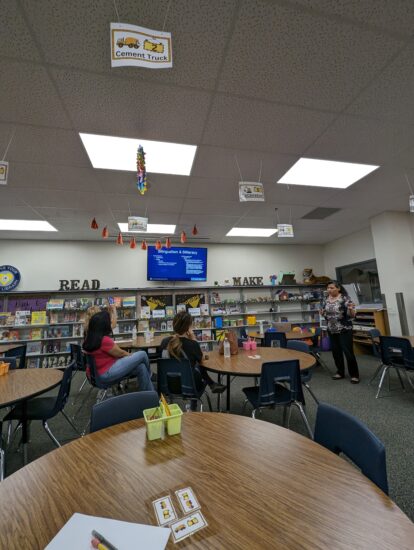
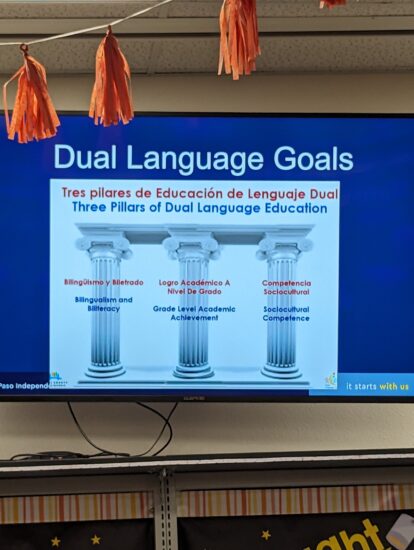
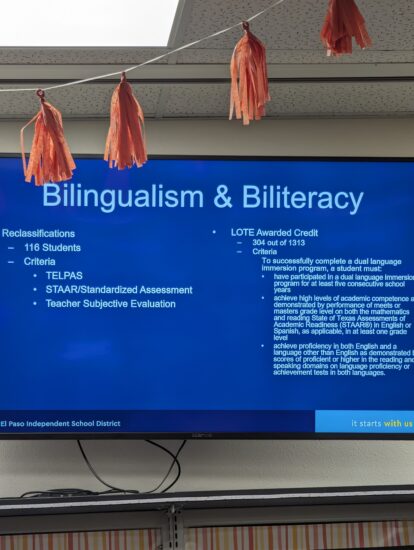
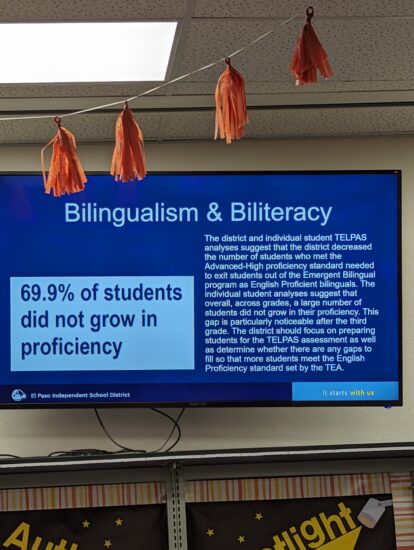
A Sea of Changes: From 50/50 to 90/10
The recent changes had left me skeptical. Past experiences with rapid shifts in the education landscape had taught us to tread cautiously. Past abrupt transitions in PE programs, unexpected shifts in curriculum, and now the transformation from a 50/50 dual language model to a 90/10 model – these shifts had left many of us seeking clarity.
The transition from a 50/50 to a 90/10 dual language model intrigued me, yet I approached it with cautious optimism. Previous experiences had taught us that change required a measured approach. Fortunately, this time around, the phased implementation and ongoing community meetings provided an avenue for us to voice concerns, engage in discussions, and absorb information at a more gradual pace.
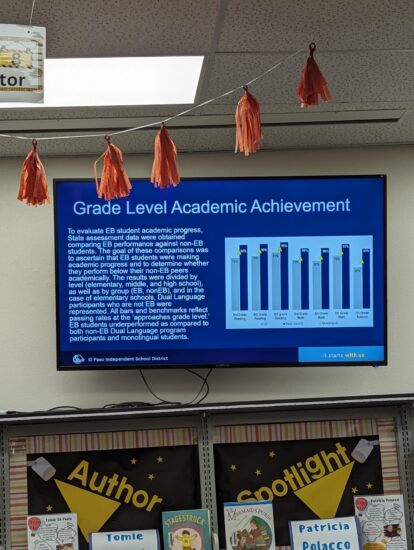
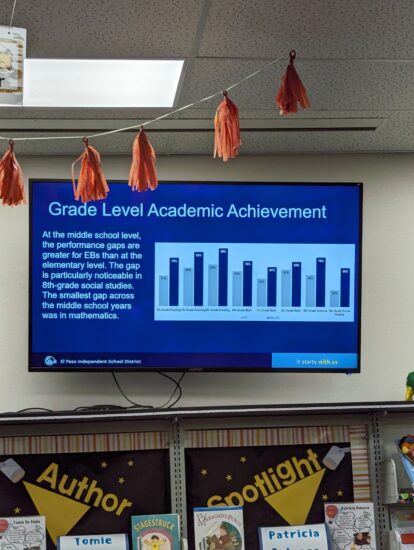
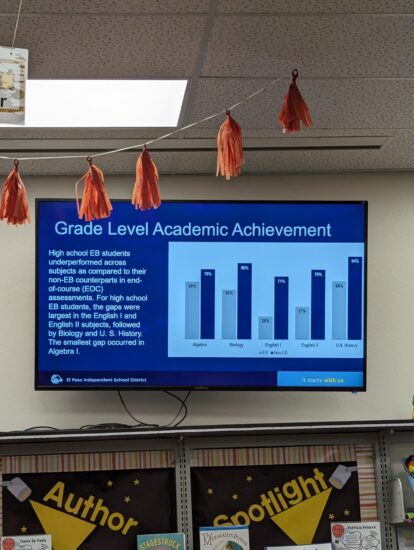
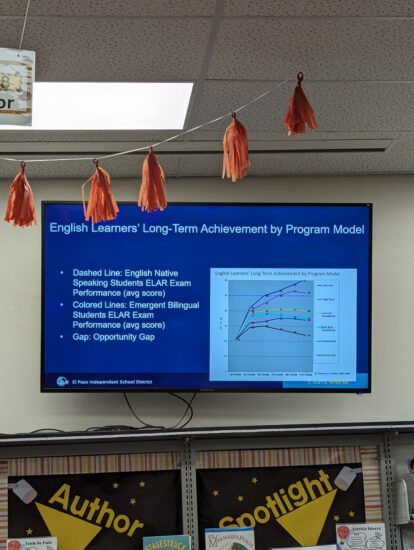
Breaking Down the Bilingual vs. ESL Conundrum
Now, let's unravel the enigma that is the distinction between bilingual education and ESL. Both are familiar terms, but do we truly understand their essence? In essence, bilingual education employs two languages for instruction, offering students a holistic learning experience. Conversely, ESL (English as a Second Language) prioritizes teaching English to students whose native language isn't English.
Here's the plot twist: EPISD's bilingual program is predominantly tailored to native Spanish speakers. The rationale behind this lies in the considerable Spanish-speaking demographic in our city. For those proficient in languages like Russian, Mandarin, or Polish, ESL serves as the bridge to master English. A crucial point to note is that this program isn't engineered for English speakers to learn Spanish. Rather, it's designed to empower Spanish speakers to conquer English. The program's extension to include English speakers aims to expedite the learning process for our Spanish-speaking peers, with funding primarily aimed at facilitating English mastery for Spanish speakers.
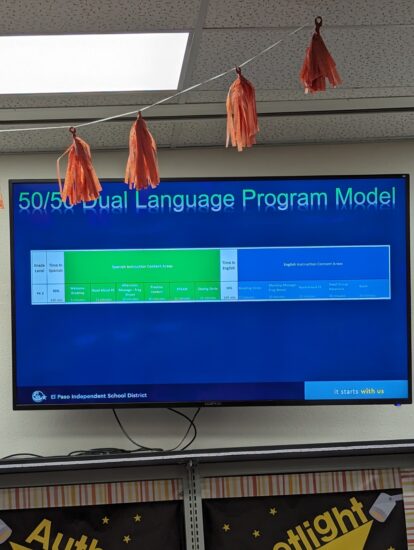
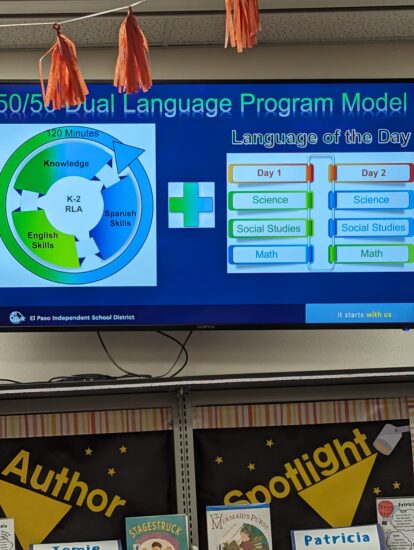
Now, here's the real eye-opener for me: the difference between bilingual education and ESL. In Texas, these are distinct but related concepts. Bilingual education involves using two languages to teach students, while ESL (English as a Second Language) focuses on teaching English to students who speak another language at home. The confusion came when the program was referred to as “50/50.” I, like many non-Spanish speakers, assumed it meant true bilingual education. Turns out, it's designed differently. They kept mentioning this code, Texas Administrative Code section 89.1210, which essentially outlines the distinction between bilingual and ESL programs. Basically, schools can set up special bilingual programs, even if there are fewer than 20 students in the same grade level district-wide. And they need to follow specific rules outlined in various sections of the code.

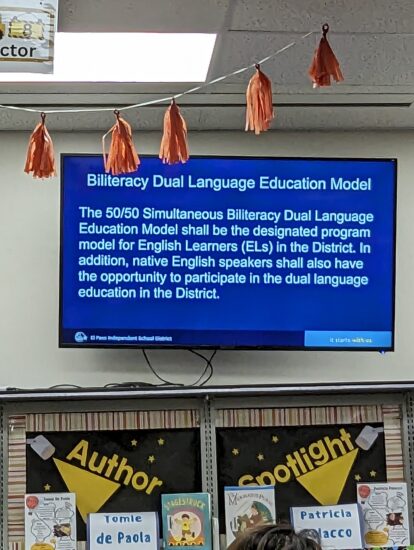
A Glimpse of True Bilingual Education: The Mesita Marvel
Enter Mesita Elementary – a beacon of genuine bilingual education. Thanks to a grant encompassing English, Spanish, and even Mandarin, this institution showcases a holistic language-learning approach. When researching, I encountered parents proudly sharing stories of their children mastering both Mandarin and Spanish. These anecdotes highlighted the existence of comprehensive language programs within EPISD. However, the stark difference between the EPISD program and the idealized “genuine bilingual dual-language model” left many of us uneasy. Our anticipation of our children becoming fluent in both speaking and writing Spanish was met with a reality far from this ideal. Unequal access to resources and tutoring resulted in a significant number of students dropping out due to the challenges. The low enrollment only exacerbated the issue.
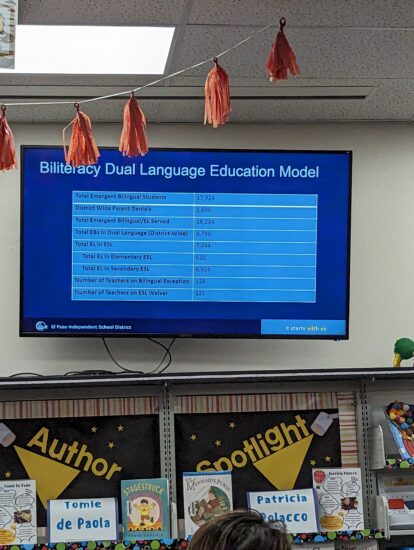
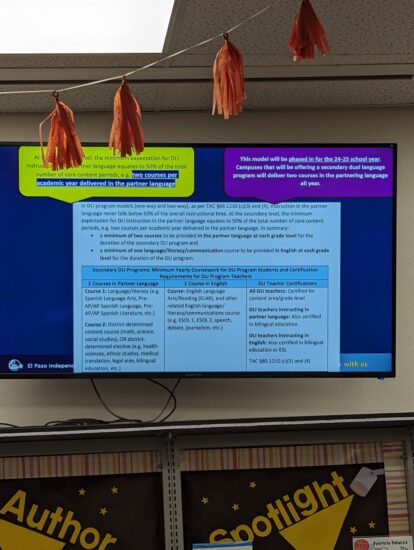
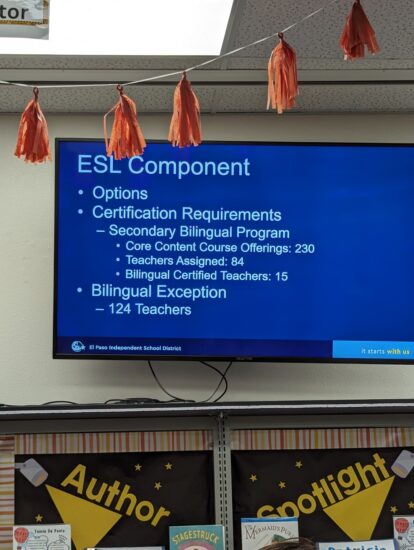
Certification Hurdles and Funding Shortfalls
The community meetings unveiled another layer of complexity: the hurdles of obtaining certifications for dual language teaching at the elementary level. This predicament led to the issuance of numerous waivers. Essentially, educators found themselves navigating uncharted territory without proper training. It's akin to plugging gaps in a ship's hull. Amidst this landscape, the efforts of schools like Tippin Elementary stood out – their proactive approach to funding teacher development deserves commendation. In a contrasting tale, the dearth of funding directly impacts education quality. This brings us to a pivotal realization: EPISD should allocate funds to empower teachers and enhance their proficiency. The striking numbers – 124 teachers with bilingual exceptions and 125 with ESL waivers – underscore the urgency to address this certification gap.
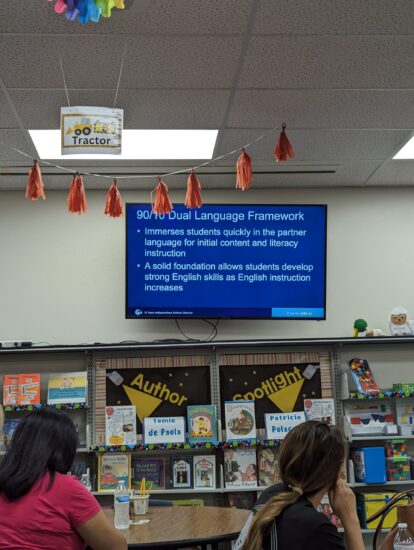
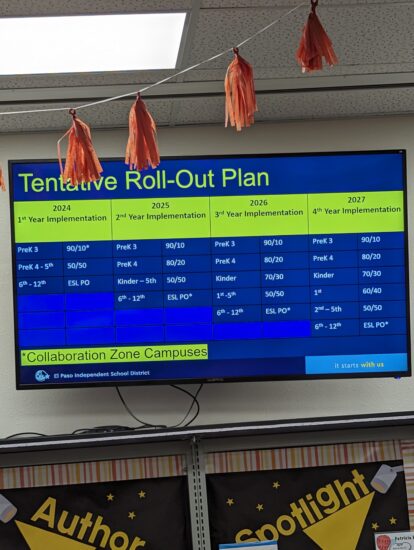
Unveiling the Vision Behind the 90/10 Model
Now, let's demystify the essence of the 90/10 model. The goal? To optimize learning for native Spanish speakers by introducing English components progressively. However, here's the catch: this model is tailored for those aiming to master English. It's important to clarify that this program isn't intended for native English speakers to learn Spanish. EPISD's extension of the program to include English speakers serves to bolster the educational journey of Spanish speakers. It's a nuanced departure from a straightforward 50/50 division, prompting challenges for English-speaking parents.
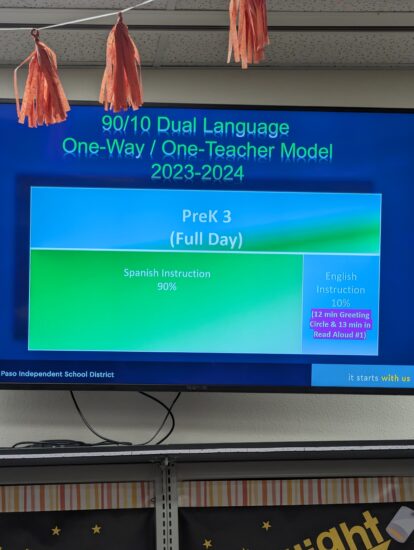
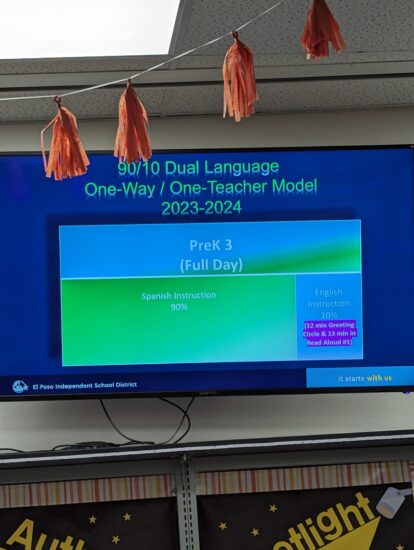
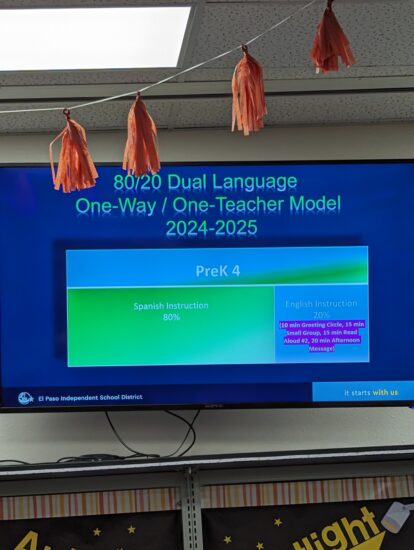
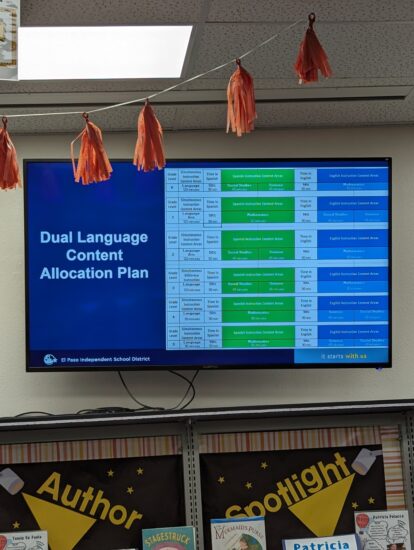
During the meeting, we articulated our concerns to the administration. While the original program design catered to Spanish speakers, the administrators assured us of their commitment to supporting English-speaking students. This assurance empowers us to request additional tutoring and resources. Armed with this commitment, I'm holding EPISD accountable to ensure my children flourish within this educational framework.
Here's why EPISD administration thinks the changes are justified:
In Conclusion: Navigating the Bilingual Education Journey
And there you have it, El Paso – an expedition into the evolving landscape of EPISD's bilingual education transformation. As we conclude this enlightening journey, I encourage you to remain curious and informed. Education is the bedrock of our society, and our collaborative efforts shape its trajectory. If this discourse piques your interest, consider attending these meetings in person. Your voice holds immense power, and collective participation charts the course of our educational voyage.
As the sun rises on a new day, remember that a meeting at Archie Duran awaits at 10 am. Furthermore, don't hesitate to reach out to your school board representative for deeper insights. Thank you for joining me on this exploration, El Paso! Let's continue our pursuit of knowledge and progress through “To Do El Paso.” Together, we mold the future of our children's education.














